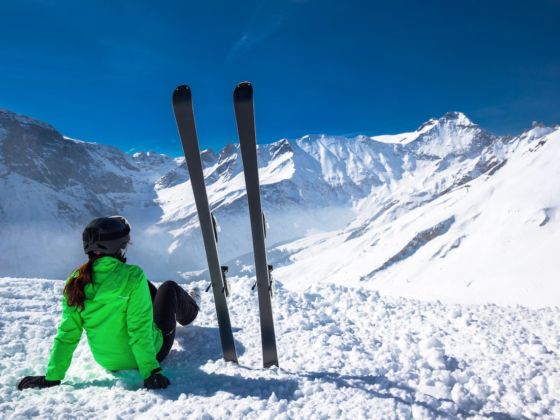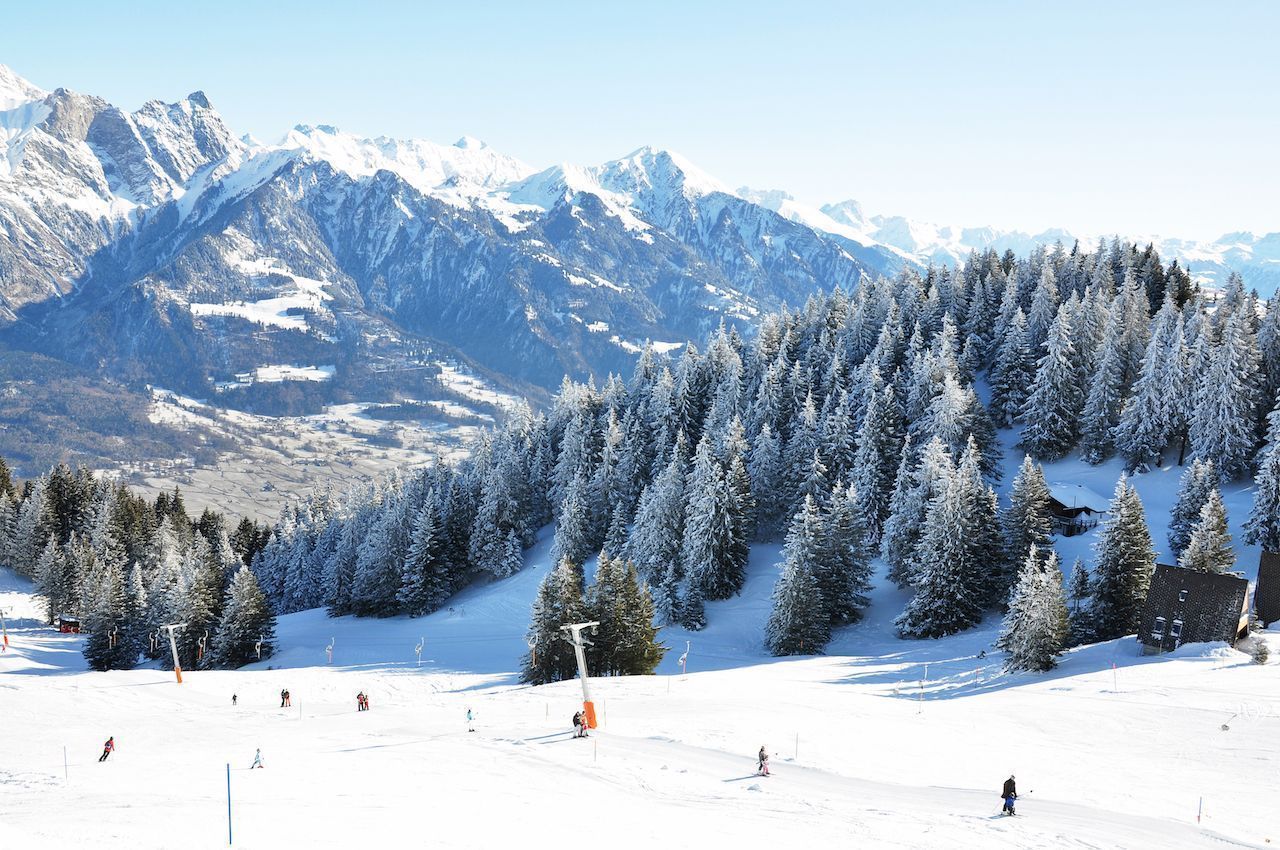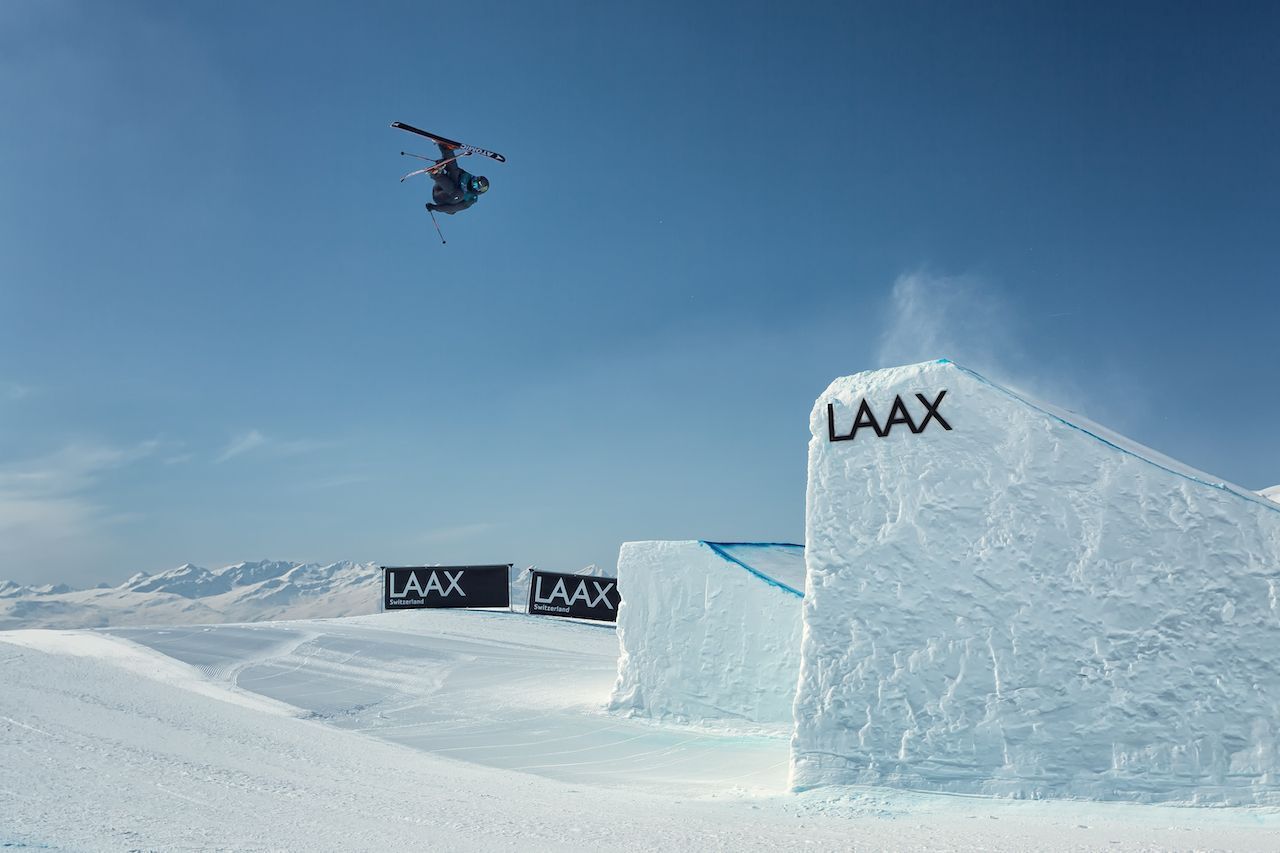Zurich, the financial capital of Switzerland, is home to world-class universities, multinational companies, and hip neighborhoods. The city has a lot going on, but during winter weekends, many Zurich residents leave town to hit the slopes. The Swiss Alps are home to many resorts, both big and not so big. Some you may have heard of — and many probably not. From this picturesque little city, it’s crazy easy to explore a huge variety of places loved by both locals and international visitors.


Near Zurich, Switzerland, World-Class Skiing Is Just Another Saturday in Winter
We’ve compiled a list of some of the best areas that local Zurich skiers frequent for a half-day, one day, or weekend trip. From the Zurich Main Train Station, all are reachable in 50 to 105 minutes by car (with no traffic) and 70 to 180 minutes by public transit. Unlike in North America, where resorts are listed by skiable acres, in Switzerland, kilometers of pistes are listed — which means there’s even more off-piste skiing that’s not even measured. For each resort, we note the piste kilometrage with its equivalent in miles.
If you’re considering going off-piste, know that in Europe, these areas aren’t necessarily controlled for avalanches — even when they’re within sight of a groomed slope. Always ski with a buddy when not on-piste and wear a beacon. If you have one, don your avalanche backpack, too.
“Small,” really local places
If you’re looking for a real local experience, these are the places to go. The mountains on this list are the closest to the city and are frequented pretty exclusively by people living in the Zurich area. Don’t imagine some poorly run, two-lift hill, however. These are still Swiss Alps. These ski areas are decently sized with a variety of pistes. All of them have modern lift systems.
Flumserberg

Photo: Fedor Selivanov/Shutterstock
From Zurich by car: one hour
From Zurich by public transit: one hour, 25 minutes
Number of lifts: 17
Total length of pistes: 80 kilometers (50 miles)
Of all the local ski mountains, Flumserberg is the biggest and most popular choice for Zurich day-trippers. While it’s less than half the size of Flims-Laax, which is just another 30 minutes driving, that doesn’t mean it’s small. It’s still got enough terrain of all difficulty levels to keep you busy. At Flumserberg, you can ski the nearly four-mile-long Terza downhill run, try your hand at mogul-skiing, hit one of the two terrain parks, or just stick to the bunny slopes if that’s your jam. If you are into off-piste skiing, Flumserberg is the best of the local spots. You can race through the trees and hit some steep alpine bowls.
The views at almost all the resorts on this list are breath-taking, and Flumsberg is no exception. Here, not only do you get views of a jagged steep mountain range but also of a beautiful blue lake. One of the coolest things about Flumserberg is that you can pay by the hour. It’s perfect if you want to just hop on the train from Zurich to ski for a couple of hours and then head back to do other things. Its reputation as a convenient day-trip, or half-day-trip, amongst Zurich locals means that during the weekends it can get pretty crowded. During the weekdays, however, it’s almost empty and the skiing is just as fantastic.
Hoch-Ybrig

Photo: Eva Bocek/Shutterstock
From Zurich by car: 50 minutes
From Zurich by public transit: two hours
Number of lifts: 12
Total length of pistes: 50 kilometers (30 miles)
While Flumserberg takes the prize as the biggest, most modern local ski spot with the most exciting terrain, Hoch-Ybrig wins closest place to ski. If you want to take public transit however, Pizol and Flumserberg are both closer because you must go by bus to reach Hoch-Ybrig’s base.
Hoch-Ybrig isn’t big, with relatively short runs and fewer lifts. When we say “short runs,” that is by Alpine standards, though. Some are longer than what you find in California’s Tahoe resorts. Skiing can often feel like spring skiing here, as it is at a lower elevation than other places on the list, so you can do some slushy turns in the sunshine.
Hoch-Ybrig is conveniently located, relatively cheap, and very family-friendly. For free skiers, Hoch-Ybrig has a mile-long terrain park and a skier cross course. And if you want to ski in a deep local spot, this is it. If your friends aren’t from the Zurich area, It’s unlikely they’ve ever heard of Hoch-Ybrig.
Pizol

Photo: Alexander Chaikin/Shutterstock
From Zurich by car: one hour
From Zurich by public transit: one hour 10 minutes (short shuttle to slopes from train station)
Number of lifts: 10
Total length of pistes: 43 kilometers (27 miles)
While Pizol is the smallest of the local ski spots, it’s the least crowded and most affordable. While the rates are the same as Hoch-Ybrig’s, if you book online in advance, there is almost always a discount, sometimes up to 50 percent off. If you time it right, it’s also the fastest to get to by train. You can take a direct, 60-minute train to Sargans from Zurich Main Station then catch a short bus (the 430 or 429) to the Wangs Talstation lift.
It’s the cheapest, but that doesn’t mean it falls short on providing quality skiing. If you are looking to have a relaxing day of skiing and don’t like lift lines, Pizol is perfect. Here you’ll find wide groomed pistes with views of picturesque Alpine valleys surrounded by steep peaks. When not skiing, there are 12 mountain restaurants to choose from. If you have non-skiers traveling with you, Pizol also offers tobogganing, along with spectacular hiking and snow-shoeing trails in the winter. For off-piste skiers, the options at Pizol are a little more limited, but there is a terrain park for freeskiers.
Mid-sized resorts
These two resorts can’t really be classified as exclusively local, as they are known by diehard skiers outside of Switzerland. Yet they aren’t as big as the major Alpine resorts most foreigners usually visit.
Engelberg-Titlis

Photo: Napat Aor70/Shutterstock
From Zurich by car: one hour, 20 minutes
From Zurich by public transit: two hours
Number of lifts: 19
Total length of pistes: 66 kilometers (41 miles)
Engelberg isn’t that big; in fact, by total piste length, it is smaller than Flumserberg. However, it kind of falls into a category of its own because, while it definitely attracts a lot of locals being so close to Zurich, it’s also very well known internationally. For skiers, Mt. Titlis (the mountain the Engelberg ski area is on) has a reputation as a hardcore spot offering steeps, fantastic off-piste areas, and very few intermediate or beginner runs. This reputation as an extreme ski destination isn’t limited to Switzerland. In 2018 Engelberg’s intense ski culture was featured in the Warren Miller film The Face of Winter.
On the other hand, Engelberg gets a lot of visitors who don’t ski at all. Mt. Titlis might just offer the most breathtaking views on this list, and Engelberg has definitely capitalized on that. Most places in the Alps offer views of steep peaks, but at Titlis the peaks somehow feel closer and more extreme than at other places. Non-skiers traveling just to enjoy the views can access a 360-degree rotating tram, the Titlis Cliffwalk with views of the Alps, a Titlis Glacier Cave tunnel, and a massive four-story building at the peak with multiple restaurants, gift shops, and an ice cream bar.
Don’t be surprised if you find that the ratio of international tourists from places such as India, Malaysia, China, Australia, and the like outnumber the skiers 4:1. They won’t get in the way of your skiing, though, as they all stick to the same tourist zone. I found it pretty cool, actually, and had a nice conversation with a couple from Singapore traveling outside of Asia for the first time. If you aren’t into intense downhill skiing, there’s also snow-shoeing tours, cross-country skiing, tobogganing, and lots of comfortable places to rest.
Andermatt-Sedrun

Photo: Alexander Rochau/Shutterstock
From Zurich by car: one hour, 30 minutes
From Zurich by public transit: three hours (with lots of transfers, not recommended)
Number of lifts: 19
Total length of pistes: 102 kilometers (63 miles)
Of all the places on this list, Andermatt is the most snow secure. The peak sits at 3,000 meters, or just under 10,000 feet, and usually has at least a 100-inch snow base. Unfortunately, by train there is no easy way to access it yet from Zurich. You will need to transfer trains at least twice. Unlike Engelberg, which has updated infrastructure, Andermatt has the size and potential to be a world-class resort but is underdeveloped. It recently received a big investment but needs more time before it reaches the same level of modernity and size as other places on this list.
SkiArena Andermatt-Sedrun is spread out, comprised of three separate mountains with two different village bases. The closer town to Zurich is Andermatt town. In addition to these three mountains, there are also three mini ski areas with just one to two lifts and a beginner run. Andermatt-Gemsstock is the ski area best suited for off-piste and steep skiers. There is some intermediate terrain, but you might get bored doing the same couple of runs over and over. Gemsstock has only four lifts and seven runs but 31 kilometers (20 miles) of pistes. Twenty miles of pistes divided unequally amongst seven runs illustrates how much vertical Gemsstock offers. Head up the tram and ski the long advanced-intermediate cruiser St. Anna Glescher and enjoy spectacular views. From the tram, you can also access almost limitless off-piste from bowls to chutes, often with great snow coverage.
From Gemsstock you can see Nätschen, a sun-baked mountain best suited for beginners. Nätschen has a magic carpet area, tobogganing, and chairlifts accessing easy terrain. Hikers will enjoy the trails at Nätschen also accessible by lift. From Nätschen you can get to Sedrun/Oberalp. It is the biggest of all three ski areas with seven lifts and 50 kilometers (30 miles) of pistes. Here you’ll find skiing and riding for all levels. If you’re a skier who prefers more intermediate cruisers, stick to this area. With climate change and more places sadly becoming snow insecure, Andermatt will probably continue to grow in popularity.
Bigger resorts
Zurich is also close to many resorts that are better known internationally. These resorts are big, and most North American resorts really can’t compare. They boast huge alpine areas, sweeping views, numerous family-owned restaurants, and slopes for all levels.
Flims-Laax

Photo: Canetti/Shutterstock
From Zurich by car: 1 hour, 30 minutes
From Zurich by public transit: 2 hours 15 minutes
Number of lifts: 28
Total length of pistes: 188 km (117 miles)
Flims-Laax is the closest large resort to Zurich and a favorite for many Zurich residents. It’s particularly popular amongst beginner-intermediate skiers and freestyle skiers. The park is absolutely sick, with the biggest half-pipe in Europe. International free ski and snowboard competitions come to Laax to take advantage of the amazing freestyle facilities.
Beyond the park, with just a couple of exceptions, the mountain isn’t steep. While there is less variety in the difficulty of pistes, there are a lot of them. For families and less advanced skiers, virtually the entire mountain is open to you to explore. If you are into steeps, Crap-Mignon Lift and Glacier T-bar access a steeper section.
One of Flims-Laax’s biggest draws is the hip, laid-back vibe. You’ll find cool touches on the mountain, like a wall of old TVs and records when you step off the Laax tram. There are numerous outdoor sausage stands with music playing and people taking in the sun. Like all major resorts, during the high season, there’s apres at the Laax and Flims base and on the mountain.
Arosa-Lenzerheide

Photo: Florian Muharremi/Shutterstock
From Zurich by car: one hour, 40 minutes
From Zurich by public transit: two hours
Number of lifts: 43
Total length of pistes: 225 kilometers (140 miles)
To really experience all that Arosa-Lenzerheide has to offer you need at least two days. From Zurich, we recommend going to Lenzerheide as it is closer and easier to get to. From Lenzerheide you can do one day in Lenzerheide and another day in Arosa. While it’s not well-known in North America, Arosa-Lenzerheide is a fully developed, international resort with an exciting town. You will find people from all over Europe as well as a fair share of Zurich people. Interestingly, Arosa is home to an old Kosher hotel, so it is home to a strong Jewish contingent of skiers who come every winter. Even though they get a lot of tourists, you will find that the locals are very open and love meeting foreigners — especially if you go out at night.
Here you can find slopes that suit all levels, from beginner slopes to steeps. Arosa also has two parks. If you love really long descents with sweeping views, Arosa-Lenzerheide has got quite a few. The longest piste, which goes from the Rothorn summit to Parpan, covers 4,500 feet of altitude. It’s not a trip to the Alps without a delicious lunch, and Arosa-Lenzerheide has 40 on-mountain restaurants. Arosa-Lenzerheide also has a consistently solid snow base year over year.
Klosters/Davos

Photo: Boris-B/Shutterstock
From Zurich by car: one hour, 30 minutes
From Zurich by public transit: two hours
Number of lifts: 57
Total length of pistes: 245 kilometers (152 miles)
Klosters is a small, fairly local resort that is connected to the bigger and much more famous resort of Davos. If you’re willing to drive or sit on the train for another 10-15 minutes, you can also head straight to the bigger Davos. Klosters, both the town and the mountain, are known for being family-friendly. Its main mountain, Madrisa, is designed for families. In addition to the four magic carpets for learners, there are additional attractions like a carousel and bouncy houses. Beyond the children’s areas, intermediates can schuss on slopes with stunning views of the mountains. For more advanced skiers, Madrisa might not be the best place for you.
From small Klosters, you can take a lift over to Davos, which is absolutely massive and offers something for everybody. You might not have heard of Klosters, but you probably know Davos because the World Economic Forum is held there. Its global fame means you will find people from all parts of the world here. And the skiing is pretty good. Overall, Davos is geared towards intermediates, but advanced skiers won’t be disappointed as well.
Davos is divided into six areas, each with their own particular strengths. Parsenn is the biggest and the center of everything. From the peak at Weissfluhgipfel, you can reach the network of lifts that fan out across the resort. From here you can also do a 7.5-mile-long run with a 6,500-foot vertical drop to a small farming town; from there, buses take you back to the main bases. Especially on crowded days, it’s also worth checking out the other six areas, like freestyle paradise Jakobshorn and free-ride centric Pischa.